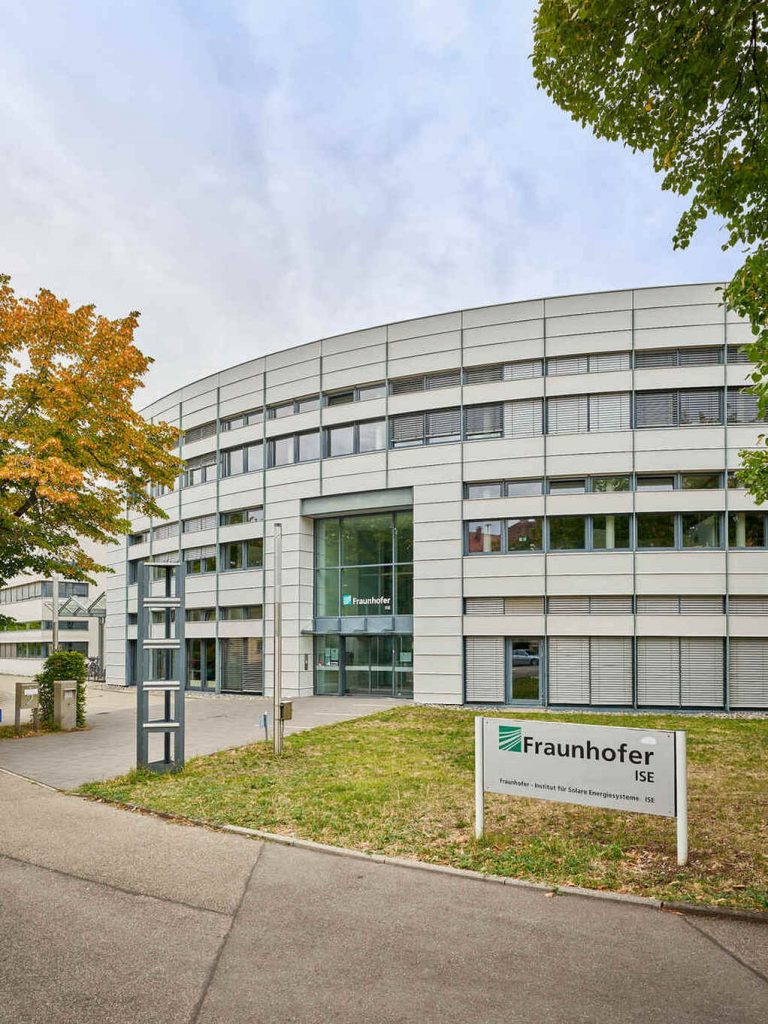Scientists from the Fraunhofer Institute for Solar Energy Systems ISE have developed a technical concept and design for a hydrogen generation plant optimised for use at sea. The “OffsH2ore” project aims to define a technically and economically optimised design for an integrated offshore hydrogen production plant using proton exchange membrane (PEM) electrolysis, including the transport of the compressed hydrogen gas to land.
The power supply for the electrolysis comes from an offshore wind farm directly connected to a 500 MW electrolysis platform. The platform can produce up to 50,000 tons of green hydrogen per year. Fresh water for the PEM electrolyser is obtained by desalinating seawater using residual heat from electrolysis.
The produced hydrogen is purified and dried, compressed to 500 bar, and transferred to a transport vessel that can carry up to 400 tons of hydrogen from the platform to the mainland. This concept is independent of the hydrogen transport pipeline and offers flexibility in the choice of location.
The project was funded by the German Federal Ministry for Economic Affairs and Climate Protection.
The concept guarantees the production of hydrogen without territorial competition.
To determine the costs of hydrogen production, the first step was to determine the cost-optimal capacity of the offshore wind farm based on the electrolysis capacity of 500 MW. The minimum hydrogen production costs result from a wind power of 602 MW. In this case, they amount to €5.92/kg ($9.88) with just under 5,000 full charge hours of electrolysis.
Hydrogen production costs increase and full charge hours decrease with lower wind capacity. For example, a wind farm with a capacity of 490 MW results in hydrogen production costs of €6.37 ($10.63)/kg and full load hours of around 4,225 h/a. As a result of the lower wind capacity, the 500 MW electrolysis is significantly oversized and can no longer operate at a nominal load.
The consortium that worked on the project included Fraunhofer ISE, PNE AG as project coordinator, SILICA Verfahrenstechnik GmbH, KONGSTEIN GmbH, and Wystrach GmbH.
Scientists from Australia’s University of Adelaide recently discovered a way to produce hydrogen directly from untreated seawater. For this, they introduced an acid layer on the catalysts in situ.
Tags: Fraunhofer ISE, Hydrogen, PEM


Recent Posts
India to rely on fossil fuels until 2040: Puri
Government expands green hydrogen use with new pilot scheme
Small victory at COP-29 as nations approve new carbon market rules
Three winners for the reindustrialisation of the Seine Axis
Nufarm to expand biofuel platform with R&D partnerships
Carbon Clean signs agreement with Julius Montz
ZeroNorth and Vitol launch digital bunker trial in Port of Rotterdam
DG Shipping and IME(I) Mumbai Branch Host Seminar on MEPC 82 Outcomes